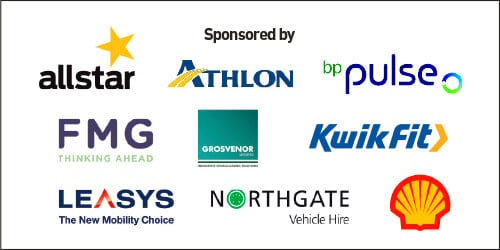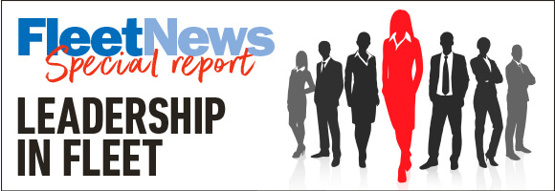This feature was taken from our special Leadership in fleet report. Click here to read it.

When ChatGPT was launched in November last year it became an instant sensation with more than 100 million people using it within the first 30 days.
The free chatbot provides a simple way to access generative artificial intelligence (AI) to get an answer to almost any question it is asked.
“Until that point, no one had thought that people without a PhD in data science would be able to access the type of capability offered by AI,” says Stuart Robertson, partner and disruptive analytics lead at LEK Consulting.
“ChatGPT put that capability in the hands of everybody, but also allows people to interface with machines in a way that is unique.”
The GPT stands for Generative Pre-trained Transformer, which refers to how ChatGPT processes requests and formulates responses – it uses specialised algorithms to find patterns within data sequences.
The language model can respond to questions and compose various written content, including articles, social media posts, essays, code and emails.
It is clear that generative AI tools like ChatGPT have the potential to change how a range of jobs are performed, including fleet management. The full scope of that impact, though, is still unknown – as are the risks.
Here, three experts address key questions around the technology:
What impact could ChatGPT and generative AI have on fleet management?
LEK Consulting’s Stuart Robertson: The understanding of how to use it varies. For some businesses, this impact was really obvious immediately.
For example, if you’re in journalism, it is immediately clear that you can now get a computer to write basic copy for you.
The response we were getting from fleet managers and OEMs was ‘this is terrifying and everyone is telling me this is going to change the world, but I just don’t yet see how it’s about to impact my business’.
Currently I see most interest among fleet managers in two places. One is automating claims, enabling people to interface with a chatbot, put in the details immediately and making sure the right information is being provided in the correct way.
The other is more around gathering information: how they are using the vehicle and what that means for efficiency, the residual value (RV), the total cost of ownership (TCO), etc.
Edwin Kemp, director at EY Parthenon: There are also opportunities around defleeting, for example.
I work with lots of clients where the fleet management is based, essentially, on a sale model and, traditionally, any decisions made have been based on individual’s experience.
We can quite easily see how AI could help to take in some of the external market signals to capture all that data and help identify when specific vehicles should be defleeted based on the price on the market, whatever it might be.
Lukas Neckermann, managing director of Neckermann Strategic Advisors: With ChatGPT, if you ask the wrong question, you get the wrong answer; garbage in, garbage out.
So the first questions fleet managers need to ask themselves are what do they want to find out, what are they optimising for?
If they are optimising for TCO, that’s great. Some may be optimising for sustainability or vehicle cost; whatever the optimisation is, you have to put that in. The other part is where is that data coming from to provide the answers because you need to get lots and lots of information.
Let’s say you are inclined to optimise for TCO. You can get leasing data, insurance data, RVs, fuel costs etc. and that’s great.
But you can go further. You can get in-cab cameras that face the driver to show what they are doing.
Is the driver paying attention to the road? That actually becomes a factor, ultimately, for TCO as that driver may not be optimising fuel use, or may be more prone to crashes and that sort of thing.
Are these data points being fed into the model so the fleet manager has the output that he or she is looking for?
What are the obstacles to widespread fleet adoption of generative AI?
Edwin Kemp: Broadly, organisations are grappling with lots of issues, whether they are geopolitical, supply chain or cost of living, and they are perhaps – and should be – higher on the agenda than the application of AI and ChatGPT.
I’d probably counsel that you don’t take your eye off the ball for the other things, but, equally, don’t assume you can just sit and wait to see how AI and ChatGPT develop in the industry. Taking a sort of ‘fast follower’ route is perfectly fine if that’s right for the business.
The other thing is not applying AI just for the sake of it. There have to be clear use cases where it improves the output for the customer, improves margins for the business or just facilitates a more effective operating model.
Using AI shouldn’t just be about doing things quicker and cheaper than a human can do. There has got to be things that technologically and physically aren’t feasible right now where we can deploy this. Don’t just do it for the sake of it.
Stuart Robertson: I’ll make a general observation about how industries adopt AI and what that means for fleet management.
Broadly speaking, industries that have a huge number of customer interactions and a low cost of failure – retail is a perfect example – can adopt AI technologies fast because they can experiment quickly and tons of data already exists.
If you go to the opposite extreme and think of something like oil and gas exploration, there is going to be an enormous cost of failure.
The amount of data available to use is quite small, there aren’t that many new fields or wells developed each year – if you screw up, that’s billions of CapEx wasted.
I think fleet management is in the middle. But it’s also on the cusp of a change where the data availability is going to make the promise of the technology bigger.
However, the cost of failure remains high. If we take preventative maintenance as an example, people keep talking about how it will revolutionise things, improve vehicle uptime and reduce TCO.
One of the reasons I think it hasn’t been as widely adopted as its promise suggests is because if something goes wrong – and it’s quite hard to prove that it won’t before you test the technology – and the vehicle fails or, heaven forbid, there’s an accident, that cost of failure is very high.
There’s an inherent caution which I think needs to be borne in mind as we evolve this.
Lukas Neckermann: We still need to figure out what can and can’t be automated, and there are certain things we still need human interaction for.
Ideally we get an application layer that will separate out those things that can be automated, whether it’s claims management, key swaps or up to and including ordering new vehicles, defleeting or in-fleeting new vehicles, sending vehicles to be fitted for whatever they need to be fitted for.
A lot of that can be automated, but the physical aspect probably still yet can’t be. And that’s where it changes the role of the of the fleet manager.
Stuart Robertson: To take advantage of everything you’re just describing, fleet managers have to change how they’re making decisions and how they’re going to behave.
As the role of fleet decision-maker (FDM) grows ever more complex, leadership is becoming a crucial quality.
Today's successful FDMs need to lead their teams, their drivers and their key stakeholders through a multifarious range of topics, from energy management to electric vehicles (EVs), and supply chain management to automated technology.
They need to be at the forefront of industry developments to guide their company and ensure the fleet meets the business needs in the most efficient and effective way.
Professional fleet leaders have the ability to implement policies successfully, adapting to an ever-changing environment.
They experiment and are first in line to trial new initiatives. They communicate clearly and often with those around them, helping to get buy-in to new ideas.
People leadership has risen up the list of priorities thanks to the greater focus on staff wellbeing, whether that's within fleet teams themselves or among the driving workforce.
The need to transition to EVs has opened the floodgates to a new vocabulary on workplace charging infrastructure (kW, resistors, cabling, capacity overload..), plus the creation of new relationships with the distribution network operators that would have been unheard of just three or four years ago. In each case, leadership is vital.
In this special Leadership in fleet report, we look at some of the areas having the greatest effect on the way fleets operate, offering advice and insight to give FDMs the confidence to make the right decisions and form best strategies.






















Login to comment
Comments
No comments have been made yet.